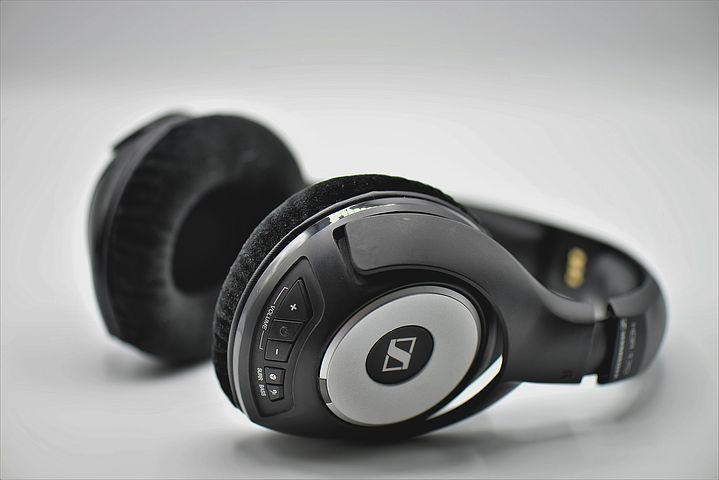
Some time ago, I wrote an article for the Bluetooth® blog about a technology known as Web Bluetooth. I’m increasingly convinced of the importance of Web Bluetooth and shine a light on its significance and potential once again in this article. I’ve also created a downloadable, multi-part tutorial for developers with which you can learn exactly how to use the API and put your knowledge into practice by building a real, working Web Bluetooth application. You can download the tutorial now or follow the link to this new Bluetooth SIG developer resource at the end of this page.
Web Bluetooth is important and developers should know about it.
The Humble Browser
The web browser. It’s come a long way since my first encounter with Netscape Communicator in the 1990s. Back then it was a tool for rendering text and images downloaded from a remote web server, very, very slowly over a modem connection. Now it’s a fully-fledged applications platform and some people would say it’s the most important platform of all.
Now, I realise I am at terrible risk of incurring the wrath of native application developers everywhere, but before you Flame On, let me defend my position in the first instance by pointing out that I’m a native application developer too. But not always. The right tool for the job is a fairly reliable guiding principle.
Web Bluetooth® is important and developers should know about it.
It’s All in the Standards
The Bluetooth SIG is a standards body, so you’re probably quite used to hearing us expound the benefit of standards. Just worksinteroperability between a multitude of devices from a plethora of manufacturers doesn’t happen by magic. It’s carefully constructed technology standards that make this possible.
The web browser is the success that it is because of standards. The same content works as expected on Windows, Mac OS, Linux, Android, iOS, BlackBerry 10, and so on because the W3C adopted a series of standards and the various browsers implemented their features in compliance with those standards. The whole thing is a triumph of engineering, organisation, and cooperation.
Fans of the Browser
End users like web browsers. They might not proclaim this with the degree of evangelical passion it warrants and, in fact, they might not mention it at all because they simply take it for granted that Facebook, Gmail, YouTube, and all their other favourite web applications work wherever they are on whatever device they happen to be using. Many don’t even appreciate quite how wondrous and convenient this is. And, why should they? It just works and that’s all anyone needs to know.
But there’s another group of browser fans and that’s the enterprise IT department. For years now, cloud computing has been gathering momentum, with modern browser technology joining forces with other aspects of the cloud, such as its use of virtualisation, web services, and new database technologies, to allow the creation of sophisticated enterprise applications which scale on demand, cost relatively little to support, and are platform agnostic. It doesn’t matter in the way that it used to, that some of the company’s 100,000 employees are running a version of Windows whilst there are some departments who prefer using Macs and others still who have staff who are mobile and so have been issued with iOS tablets for their work.
This is because in cloud computing, the browser is the platform.
Indeed, cloud computing, fronted by our no longer humble friend — the web browser, has created a whole new approach to enterprise software. I’m talking about software as a service (SaaS) of course and there are numerous enormously successful SaaS products today which owe their existence to the browser and the cloud. How many of us now use Google apps, Office 365, or Salesforce.com at work?
Web Bluetooth® allows web applications to communicate directly with IoT devices using Bluetooth LE.
Enterprise IoT
The Internet of Things is largely a concern for enterprises. Yes, there are consumer applications of IoT but most true IoT systems will be run by and for enterprises. Consider the Industrial IoT (IIot) in general.
IoT systems use a mixture of technical ingredients and Bluetooth is one of them. Bluetooth® Low Energy (LE) and Bluetooth mesh networking each possess qualities and capabilities that make them perfect for many of the edge-tier communication requirements of IoT systems.
Communication at the edge tier of IoT systems is generally concerned with two broad use cases:, monitoring and control. Often these two generic use cases are linked, with data acquired by the monitoring system being piped back into the control system in a feedback loop. We can also break edge-tier communication into two categories in terms of the parties involved. Data may be communicated between machines or systems, such as when sensor data is acquired at the edge tier and communicated via a series of intermediate architectural tiers to the cloud. Or communication may take place between devices and people. People may be involved in monitoring and controlling machines, systems, processes, or whole environments using data acquired from sensors. They’ll use sophisticated graphical dash boards and control panels to observe the state of systems and interact with them. People are part of the IoT too.
Connecting the Browser to IoT Devices
Web Bluetooth® allows web applications to communicate directly with IoT devices using Bluetooth LE. Since Bluetooth mesh supports Bluetooth LE devices communicating securely with the nodes in a mesh network, Web Bluetooth could be used to create monitoring and control applications for Bluetooth mesh networks as well. When creating new IoT systems, the requirements and policies of the enterprise IT department can thus be met, without straying from the cloud computing architectural principals which govern most of the other IT systems in use and therefore without eroding the business benefits that cloud computing delivers.
Standardisation
Web Bluetooth® is not yet a W3C standard, but it needs to be. Web Bluetooth should also be implemented in all browsers. Right now, you’ll find Web Bluetooth in Chrome on most platforms. The caniuse URL in the footnote will give you full information.
If you feel the same as I do, then I invite and encourage you to petition browser implementers to get behind Web Bluetooth and progress it through the W3C standards process. The IoT needs this. You need this.
Summary
In this article on Web® Bluetooth, I’ve shared my thoughts and gone some way to convey the significance and potential of the technology. In the Web Bluetooth downloadable, multi-part tutorial for developers, I’ll change tack and start to explore Web Bluetooth in more of a tutorial style. If you think Web Bluetooth is something worth learning more about, and I hope you do feel that way, then the remainder of this series will help you get started.
For an in-depth look at the workings of Web Bluetooth, as well as some foundational knowledge you needed to get started, check out the Web Bluetooth tutorial.









